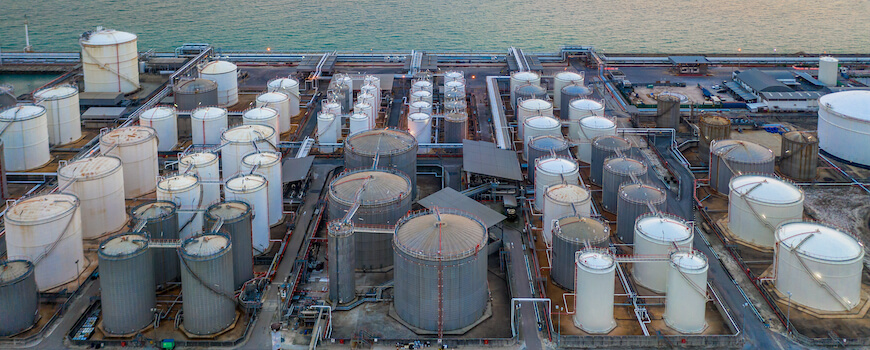
Shortly: natural gas is being converted into LNG, and then shipped by tankers to locations where an LNG terminal is able to reconvert LNG to a gaseous state, thus making it a fuel again. We should clarify that CNG and LNG are not the same things. Read our article about CNG and LNG comparison.
What is LNG?
LNG is made of natural gas, which is one of the most important energy sources in the world. Research shows that we will be out of fossil fuels by 2050, so the importance of natural gas is even bigger than before. Natural gas is the most eco-friendly type of fossil fuel and takes a key part in the international trade system.
However, natural gas producers are not able to create a pipeline network throughout the globe, and that brought LNG to life. It has the same components as natural gas, but it is stored at -162 degrees Celsius in a refrigerated form.
For safety reasons, it is also odorized.
What is an LNG terminal?
An LNG terminal (also known as LNG plant, but the word ‘plant’ is mostly used for facilities that transform natural gas into LNG, while terminals are facilities that regasify this fossil fuel).

Liquefied natural gas requires very careful control through the gasifying process, which is an extremely efficient chemical reaction: 1 cubic meter of LNG can make up to 600 cubic meters of natural gas. Then the LNG goes to the liquid natural gas export terminal. Wikipedia has a list of LNG terminals all over the world.
LNG ports waiting for LNG shipments
LNG is shipped throughout the oceans by big and efficient LNG tankers. These LNG shipments come into dedicated LNG ports that are able to load, unload and reload these tankers.
The main purpose of a natural gas port is to:
- unload cargo
- store the LNG
- regasify it
- get the gas into the transport network system
- reload cargo if necessary
LNG ports have to be prepared for the arrival of ships that are 250-300 meters long. After storage, natural gas is sent to industrial facilities and households in a gaseous state.
Pumping out the LNG to the storage tanks can take up to 12 hours because the operation has to be very cautious. Despite all efforts, it is common that a bit of LNG evaporates into the air, so transporting LNG almost always comes with a small percentage of waste (0-10%).
The method of vaporizing LNG is not that complicated: pressure (70-100 bars) and heat (greater than 0 degrees) vaporize the liquefied natural gas and turn it back into a gaseous state.
From the LNG facilities to the households
Once it is back to the gaseous state, natural gas is going under some analysis. Waste is measured and it is odorized again, if necessary.
Then terminals distribute it to the households. The usage of natural gas:
- Heating households
- Producing electricity
- Fuel for vehicles
Conclusion: the use of LNG terminals
LNG terminals are established for
- receiving tanker ships
- regasify LNG
- load an LNG shipment
These facilities are providing energy to regions that are not able to receive natural gas by pipelines.
